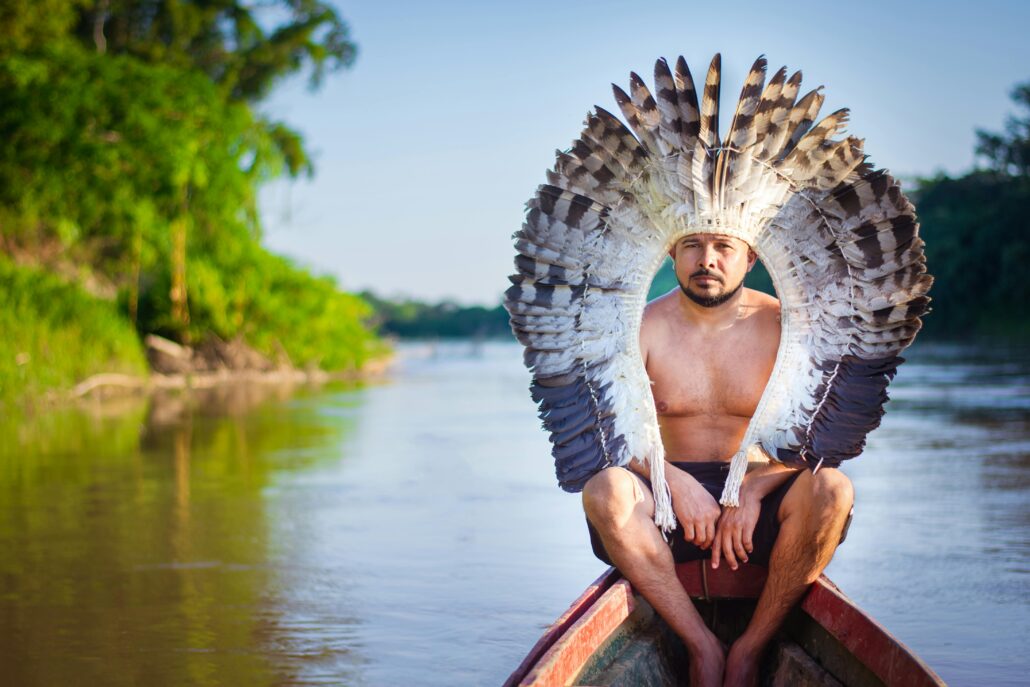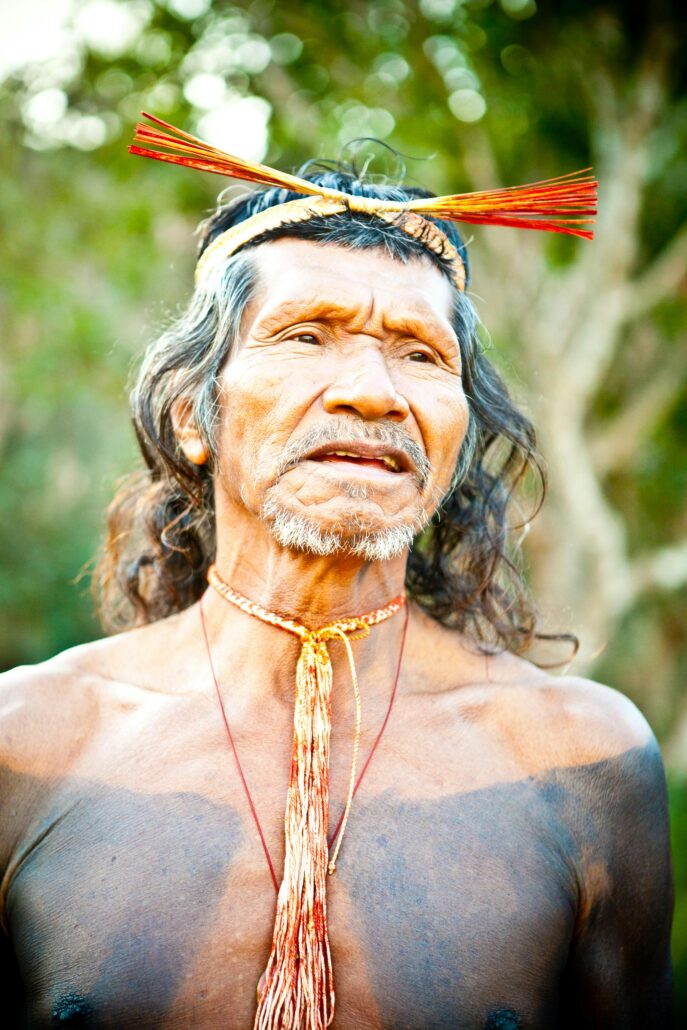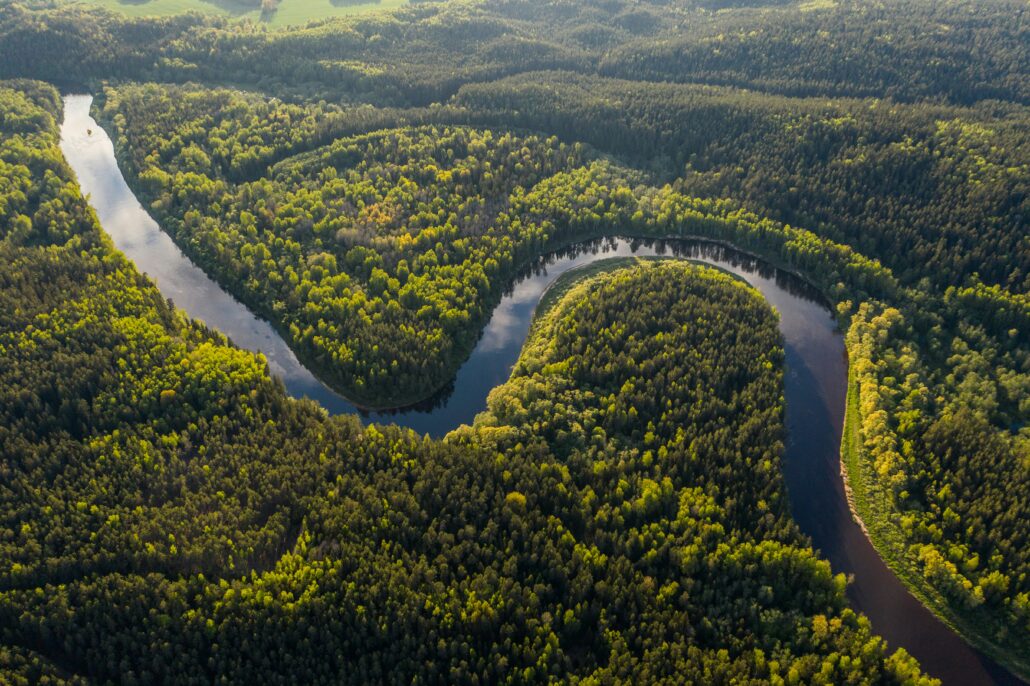Table of Contents
The History and Origins: Indigenous Tribes of Amazon Rainforest
Indigenous Tribes of Amazon Rainforest have lived in harmony with the jungle for over 11,000 years, shaping a way of life that is deeply spiritual, ecologically sustainable, and rooted in profound respect for the natural world.
These communities are not just inhabitants of the rainforest—they are guardians of its rhythms, keepers of ancient wisdom, and stewards of one of the most biodiverse regions on Earth.
Long before European colonizers arrived, the Indigenous Tribes of Amazon Rainforest had already built sophisticated societies. They developed farming systems like terra preta (rich, fertile soil enhanced by organic waste), managed water sources, created complex social structures, and preserved their history through storytelling, song, and sacred rituals.
Their traditional knowledge systems were interwoven with the land, enabling them to thrive without exploiting or degrading the environment.
At the height of their flourishing civilizations, historians estimate that nearly 6.8 million Indigenous people lived across the Amazon basin. But the arrival of European explorers in the 16th century brought waves of devastation—unfamiliar diseases like smallpox, brutal enslavement, and violent territorial invasions led to mass suffering and population loss. Despite these traumas, the Indigenous Tribes of Amazon Rainforest have not disappeared. They endured.
Today, over 300 Indigenous Tribes of Amazon Rainforest still call this region home. Each tribe—whether it’s the Kayapo, the Yanomami, the Ticuna, or the Ashaninka—has its own language, spiritual beliefs, medicinal practices, and environmental knowledge passed down through countless generations. T
heir resilience and commitment to cultural preservation offer invaluable insight into how humanity can coexist with nature rather than conquer it.
Understanding the history of Indigenous Tribes of Amazon Rainforest is essential—not only to honor their legacy but also to recognize their ongoing role in protecting the future of the Amazon itself.

Daily Life and Traditions: Indigenous Tribes of Amazon Rainforest
The daily life of Indigenous Tribes of Amazon Rainforest is deeply rooted in ecological harmony, collective responsibility, and cultural continuity. Every element of their routine—from shelter to sustenance—reflects a profound, generational understanding of the rainforest’s cycles.
Community is the heart of these tribal societies. Families often reside in large communal homes called malocas, built entirely from natural materials like palm leaves, bamboo, and tree trunks.
These structures are not just dwellings—they are cultural hubs where multiple generations live together, share meals, tell stories, and pass down ancestral knowledge. Decisions within the village are often made through consensus, with deep respect given to elders and spiritual leaders.
Labor is divided in ways that maintain both balance and tradition. Men typically focus on hunting and fishing, employing age-old techniques and tools passed down for centuries, like blowguns with curare-tipped darts, bows and arrows carved by hand, and forest-crafted traps.
The forest and rivers provide an abundance of protein, including wild boars, monkeys, tapirs, capybaras, and a variety of fish species, all hunted with skill and intention.
Women carry the wisdom of agriculture. They manage forest gardens and cultivate staple crops like manioc (cassava), bananas, beans, yams, and medicinal herbs.
Farming methods, such as rotational slash-and-burn cultivation, are applied with precision and care to preserve soil vitality and protect biodiversity. These gardens are not just a source of nourishment—they’re a form of ecological stewardship that has helped Indigenous communities thrive for thousands of years.
These daily rhythms are more than survival—they’re a living embodiment of identity, tradition, and sustainability. Interacting with Indigenous Tribes of Amazon Rainforest offers not just insight into their lives, but also inspiration for rethinking how we connect to the Earth.

Traditional Survival Techniques: Indigenous Tribes of Amazon Rainforest
Survival in the Amazon Rainforest demands far more than physical endurance—it requires a deep, ancestral understanding of nature’s patterns, threats, and gifts. The Indigenous Tribes of Amazon Rainforest have mastered this balance, living sustainably for thousands of years within one of the planet’s most complex ecosystems.
In floodplain regions known as várzea, Indigenous communities build their lives around the seasonal rise and fall of the rivers. These fertile zones become rich agricultural beds during the rainy season, allowing tribes to grow manioc, bananas, and wild rice.
Fishing is central to survival here, with locals using handmade nets, woven fish traps, and carved wooden canoes to navigate the labyrinth of waterways and harvest fish species that thrive in nutrient-rich waters.
On higher ground—known as terra firme—other Indigenous Tribes of Amazon Rainforest rely on rotational slash-and-burn farming. While often misunderstood by outsiders, this method is highly strategic.
By clearing small patches of forest, planting for a few years, and then allowing the land to regenerate, they promote biodiversity and soil health. It’s a cyclical process rooted in careful observation and respect for the forest’s regenerative abilities.
One of the most extraordinary aspects of these survival systems is Indigenous plant medicine. Across many tribes, shamans and healers carry oral knowledge that has been preserved and passed down for generations.
They use barks, roots, leaves, vines, and resins to treat a vast range of ailments—from fevers and infections to spiritual imbalances and venomous bites. Many of the pharmaceutical compounds used in modern medicine have roots in these traditional remedies.
But these survival strategies are more than practical—they are deeply cultural and spiritual. Every hunting trip, farming cycle, and medicinal ceremony is part of a broader worldview that honors nature as a living, sacred force.
The Indigenous Tribes of Amazon Rainforest don’t just survive here—they thrive in harmony with their environment, offering a living model of resilience, respect, and sustainability in a world that urgently needs it.

Cultural Traditions and Spiritual Beliefs: Indigenous Tribes of Amazon Rainforest
Among the Indigenous Tribes of Amazon Rainforest, daily life is inseparable from cultural ritual and spiritual belief. These communities view the rainforest not simply as a home but as a sacred, living entity. Everything in the forest—from towering ceiba trees to flowing rivers, jaguars, birds, and even the wind—is believed to hold spirit and consciousness.
This holistic worldview shapes how they interact with nature, interpret events, and preserve harmony among themselves and their environment.
Spiritual leadership is typically held by shamans, who are revered as the cultural and healing pillars of the tribe. These spiritual figures serve as intermediaries between the physical and spiritual realms. Through ceremonial use of sacred plants like ayahuasca, shamans guide participants in healing rituals, dream interpretation, and community protection.
These experiences are deeply symbolic, often accompanied by chanting, drumming, and the careful use of medicinal herbs collected from the forest. Such ceremonies not only promote healing but also reinforce the spiritual relationship between tribe members and the land that sustains them.
Cultural identity is also expressed through body art, attire, and symbolic ornamentation. Many Indigenous Tribes of Amazon Rainforest adorn themselves with natural pigments derived from seeds, charcoal, and clay to mark spiritual rites, protect themselves from bad energy, or simply celebrate seasonal rituals.
Traditional clothing ranges from minimal to elaborate, often incorporating feathers, woven fibers, and beadwork made from natural materials found in the forest.
Music, oral storytelling, and dance remain vital cultural lifelines. Songs tell stories of ancestors, animal spirits, creation myths, and moral lessons, passed from elders to children without ever being written down. Each performance is both art and education, helping preserve history, instill values, and reinforce the cultural fabric of the tribe.
Even in the face of globalization and encroachment, the Indigenous Tribes of Amazon Rainforest continue to protect these traditions. Their ceremonies, language, and worldview carry the essence of millennia-old knowledge—wisdom that is rooted not just in survival, but in spiritual balance with the Earth.
To gain deeper insights into the traditions and knowledge systems of Amazonian peoples, the Smithsonian Institution offers excellent educational resources on indigenous Amazon cultures.

Challenges Facing Indigenous Tribes of Amazon Rainforest
For thousands of years, the Indigenous Tribes of Amazon Rainforest have survived and thrived through an intimate connection to the land. Their deep ecological wisdom, communal living, and spiritual practices have enabled them to maintain balance in one of the world’s most complex ecosystems. Yet today, these tribes face unprecedented challenges that threaten not only their territories but their very way of life.
One of the most urgent threats comes from illegal logging and gold mining. These destructive activities strip the forest of vital resources, contaminate rivers, and disrupt wildlife habitats, impacting both the environment and the people who depend on it.
Agribusiness, including large-scale cattle ranching and soy farming, continues to push deeper into Indigenous territories, often backed by powerful corporate and political interests. Even legally protected lands are at risk due to weakening environmental regulations and enforcement.
The expansion of infrastructure, such as roads and dams, further fragments the forest and opens previously isolated regions to exploitation. For many Indigenous Tribes of Amazon Rainforest, this means displacement, loss of sacred lands, and erosion of cultural identity.
Despite these threats, Indigenous communities have responded with remarkable strength and advocacy. Many have organized grassroots resistance movements, filed legal claims to protect their ancestral territories, and partnered with global environmental organizations to bring attention to deforestation and climate change.
Others have chosen to open up carefully managed, ethical tourism experiences that allow them to share their traditions while preserving their autonomy.
At Vitor Lindo Creative Works, we believe in supporting this resilience. Our Amazon Rainforest journeys are designed in close partnership with trusted local leaders, guides, and communities.
These experiences are built on mutual respect, cultural sensitivity, and a commitment to ethical storytelling. When you travel with us, you are not simply observing a culture—you’re contributing to its visibility and long-term survival.
By choosing responsible, community-based tourism, travelers can help protect the forest and uplift the Indigenous Tribes of Amazon Rainforest who have safeguarded it for millennia.
You can learn more about global efforts to support Indigenous rights and protect tribal communities through the United Nations Permanent Forum on Indigenous Issues.

Experience the Way of Life: Indigenous Tribes of Amazon Rainforest
Have you ever dreamed of journeying into the heart of the Amazon to connect with communities who live in harmony with nature? At Vitor Lindo Creative Works, we turn that dream into an unforgettable, custom-curated experience rooted in respect, safety, and cultural authenticity.
Our immersive visits to the Indigenous Tribes of Amazon Rainforest offer a rare opportunity to witness traditions that have been carefully preserved over generations.
From fishing with handmade tools to preparing meals with medicinal plants, from storytelling under the stars to sacred spiritual rituals, these tribes open a window into a way of life that is deeply connected to the forest.
Each of our Amazon Rainforest vacation packages is designed around ethical tourism practices. We collaborate directly with Indigenous communities and trusted local guides to ensure that every experience is respectful, meaningful, and mutually beneficial.
Visitors are not passive observers—they are welcomed guests, invited to learn about forest stewardship, survival techniques, and the spiritual wisdom that defines these extraordinary cultures.
Whether you’re a Photographer seeking rare and impactful images, a couple looking for an unconventional and soulful escape, or an adventure traveler eager to dive deeper into authentic Brazil, our full-service itineraries offer unmatched access to the Indigenous Tribes of Amazon Rainforest.
With bilingual support, concierge-level coordination, and a deep respect for local tradition, we handle all the details so you can be fully present.
This isn’t just a trip—it’s a once-in-a-lifetime journey into one of the world’s last great frontiers, guided by the people who know it best.

About Vitor Lindo Creative Works
I’m Vitor Lindo—a Brazilian-American Photographer, filmmaker, and curator of immersive adventure experiences. With over 13 years of visual storytelling expertise, I founded Vitor Lindo Creative Works to help travelers explore the most breathtaking corners of Brazil through fully customized, photography-driven journeys.
Based between the U.S. and Brazil, my team and I specialize in crafting one-of-a-kind experiences that go far beyond the typical tourist trail. From the dense, sacred depths of the Amazon Rainforest to the surreal white dunes of Lençóis Maranhenses, our retreats and expeditions are designed for those seeking beauty, culture, and connection.
Whether you’re a solo traveler yearning for a deeper sense of purpose, a couple in search of meaningful memories, a family wanting to reconnect in nature, or a Photographer chasing cinematic landscapes—I’ll create a journey that reflects your pace, passions, and purpose.
With bilingual support in English and Portuguese, deep cultural fluency, and years of experience guiding travelers through South America, Central America, North America, and Europe, I offer concierge-level service from planning to execution. You’ll never feel like a tourist—you’ll feel like you belong.
If you’re ready to swim in secret lagoons, visit Indigenous communities in the Amazon, or capture golden-hour light over untouched landscapes, let’s create something unforgettable together.
Contact Us to Begin Your Adventure
- Email: Vitor@vitor-lindo.com
- Brazil WhatsApp: +55 (22) 99950-0906
- U.S. Number: +1 (912) 216-0798
- Instagram: @vitorlindophotovideo
- Website: https://vitor-lindo.com/
Check out our other Adventure Resource Journals:
- Discover the Best Time to Visit Lençóis Maranhenses: Your Ultimate Guide to Unforgettable Adventures! The best time to visit Lençóis Maranhenses
- Discover the Enchantment of Lençóis Maranhenses National Park: A Guide to Nature’s Hidden Gem
- Discover the Magic: Unforgettable Lençóis Maranhenses Tours for Adventure Seekers
- The Ultimate Guide to Finding the Best Lençóis Maranhenses Hotel: Where to Stay in Barreirinhas, São Luís, Santo Amaro & Atins
- Discover Unforgettable Amazon River Cruises Brazil: Your Ultimate Adventure Awaits
An award-winning Wedding Photographer, Videographer and Adventure Travel expert.
I'm Vitor Lindo
